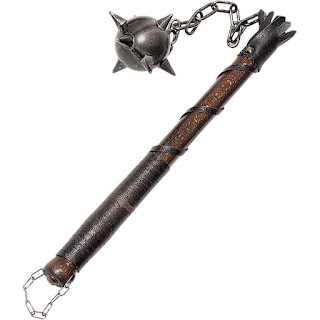Bakersfield Community Theatre has two distinctions. First, it is the oldest in Bakersfield, dating to 1927. Second, it is the oldest continuously producing theater in California. I hadn’t really seen anything there, oddly, until recently, although I had seen many of the actors in productions at other venues.
Last year, all of our local thespian organizations had to come up with creative alternatives to in-person shows due to Covid, and BCT was no exception. Their approach was to use Zoom to produce a pair of radio dramas by Philip Grecian, Dracula, and It’s A Wonderful Life. Both were enjoyable and well conceived given the medium.
This year, I figured I would check out a live play or two, schedule permitting. I was particularly intrigued by this one, Deathtrap, both because of the author, Ira Levin (our book club read Rosemary’s Baby a few years ago) and because of the cast. (My instincts on the later turned out to be spot on.)
Deathtrap is a murder mystery and comedy, more or less. I mean, there isn’t much of a mystery about who the murderer or murderers are, but the motives and, let’s be honest, what the heck is going on at any given time, is the real mystery. There are plenty of plot twists, some fun foreshadowing, and a name that means at least two things.
Levin also writes the play very much ironically, which is definitely of its time but fascinating nonetheless. The center of the plot - indeed, the protagonist of the play - is a play called Deathtrap. It is this fictional play, or better, the idea of this play, that is the mother of all MacGuffins and the central character of the drama, from beginning to end. There is a definitely “meta” vibe about the play, with plenty of winking references to the elements of the genre, as well as a tongue-in-cheek awareness of the play itself. Don’t expect it to take itself seriously.
The idea of the fictional Deathtrap is that it is the perfect commercial horror drama, with five actors, murder, plot twists, and every ingredient to make its author fabulously rich. We first hear of the play when washed-up playwright Sidney Bruhl (Steve Evans) is supposedly reading the play, sent to him for his opinion by a student at one of his seminars. He goes off on a profanity-laced rant about how unfair it is that the play is by a student, not himself, and so on. He and his wife Myra (Julie Gaines), then plot to lure the student, Clifford Anderson (Juan Quiñonez) to their remote New England farmhouse. Sidney toys with the idea of murdering Clifford, which horrifies Myra, but she thinks Clifford can be convinced or bullied into “collaborating” with Sidney, so that both can share the profits.
Clifford does indeed come, bringing (all too conveniently), his only copy and original manuscript, and, well, you will have to see what happens.
The other characters are Helga Ten Dorp (Jacquie Thompson-Mercer), the German psychic and comic relief; and Porter Milgrim, the young lawyer (Ty Halton). Don’t get too attached to any character, because the body count in this drama is…really high.
I won’t spoil the plot beyond this.
Many of the usual suspects work behind the scenes, including director Jan Hefner, who has been a regular both on stage and behind the scenes. (Also, an administrator at The Center for Sexuality and Gender Diversity, an organization that does great work with our LGBTQ+ community, a tough job in this conservative and all-too-often hateful county.)
I should mention a few things that stood out to me. First, the set was straight-up amazing. BCT has a superpower: finding props and sets for next to nothing at thrift stores, garage sales, and staff and community members. The set combined the most 1970s look possible with an impressive array of weaponry. The furnishings and knick-knacks brought me back to my grandparents’ generation during my childhood. I feel like I was literally in that house they recreated. Well, except for the weapons. I didn’t know anyone with the “Dungeon Chic” aesthetic growing up. Which might be why I survived childhood, right?
Cast and Production TeamI also thought the casting was excellent. I have long enjoyed the work of Steve Evans, Julie Gaines, and Jacquie Thompson-Mercer. All three are veteran actors with distinct styles and strengths, and their roles played to these strengths. Evans was more edgy than I had seen before, because of the simmering menace that the role required, but he retained a certain dose of his “everyman” persona. Gaines was nervous, with hands always moving, which was riveting. She brought the tension level up during her scenes, making it believable that she actually thought her husband capable of murder. Thompson-Mercer was hilarious as the psychic, with just enough wry self-awareness to show she was in on her own joke. (Necessary in this play.) Just a bit of a wink at the audience once in a while.
Sidney Bruhl (Steve Evans) and Helga Ten Dorp (Jacquie Thompson-Mercer)Ty Halton was recently in Tommy and RENT - in a fun coincidence, the last play we saw before the lockdown, and the first after reopening, respectively. His role as the lawyer was smallest, and was intended to be the straightest of the roles. He was fine, and didn’t try to overpower the limits of the character.
I wasn’t particularly familiar with Juan Quiñonez, although he was in a few productions locally that I did not get to see. I thought he did well in the role, bringing a secretive and introverted vibe to it.
The one kind of weird moment was due to the era the play was written in. The 1970s were in many ways the first truly public era of the gay rights movement. It was acceptable, but still a bit transgressive to openly refer to homosexuality. Levin has a few lines in there that seem to be intended to tap into the audience’s anti-gay prejudice - to at least have some discomfort with the idea that Sidney may have taken on young Clifford as a gay lover. In 2021, well, this feels a bit dated, and I could tell that there was a bit of discomfort on the part of the actors as well. We are, at least in the progressive and arts communities, beyond the idea that the gay guy is the murderer, and the lesbian is the Russian spy. (See: Clancy, Tom) And, I would say that the script is all-too-eager to assure everyone that whatever it might look like, the characters are perfectly straight, thank you very much. No fault of the actors, and sometimes you just have to live with a flawed script.
There was also one minor error that only people like me care about. And again, I believe this is the fault of the script, which is in turn the fault of popular culture. The script refers to a “mace.” Here are a pair of maces:
Basically, a club with spikes. (Also, used as a symbol of royalty, but using jewels.) Also, definitely used as a weapon, and an often effective one.
This is not a mace, but a flail:
Flails are good at one thing: looking cool. As a weapon? Terrible. In fact, flails were likely never used as weapons at all, but were ceremonial, decorative, or at most used as a variation on the cat-o-nine-tails. Or, just maybe, they were invented by artists because, well, because they look dangerous and exotic and generally badass.
Obviously, all this digression serves to prove is that I am N-E-R-D-Y. Which you already knew. And really, it makes sense that the script refers to a “mace” which is really a flail and shows up in the collection of a writer of horror and murder mystery plays. Which is totally plausible.
One final thing to mention: Bakersfield is a strange town. We have a vibrant arts, music, and theater scene, which also happens to be more progressive, liberal, and affirming than other subcultures in town. We also have Trump Train parades, and far too many Confederate Battle Flags. As one could easily predict, this also goes with one of the lowest vaccination rates in California, and an undercurrent of hostility toward safety measures.
For theaters, this makes for a tough dilemma. Because of low vaccination rates, Covid transmission is fairly high, and putting a bunch of people indoors together for a few hours is a recipe for spreader events. In addition, state requirements have changed over time, and predicting restrictions is beyond even the powers of Helga Ten Dorp.
And not just that, but theaters need support from the community to survive. (This is the same issue facing the Bakersfield Symphony.) If you misread your audience and donors by imposing safety measures they disagree with, you risk financial disaster.
Different theaters have taken different approaches. BMT Stars came out early in stating that all performers and staff would be vaccinated by the first rehearsal of the season, but they have not required vaccination or a negative test for the audience. For others, they have gone with the state requirements, but nothing more. I get this, for the reasons above, even as I wish that everyone would just get the hell vaccinated already and get us back to normal more quickly.
Two theaters, however, have taken the lead in safety, requiring vaccination or a negative test for all who attend - and they check ID too. BCT is one of these, and I want to give credit for their commitment to safety. (The Empty Space is the other - well done, folks.) I know they are taking a risk by doing so, and they deserve praise for it.
The sad thing is, if vaccination hadn’t been politicized by the Republican Party and the media charlatans that drive right wing sentiment, we could have been universally vaccinated from age 12 up by now. And if we had done that, all these vaccine mandates, mask mandates, and other irritating inconveniences would have been unnecessary.
Credit to BCT for doing what they can to keep live theater safe for everyone, and it was so nice to be back to in-person events. Local thespians have kept the flame alive during hard times, and that’s one reason I consider our arts, music, and theater community one of the best things about this town.




No comments:
Post a Comment